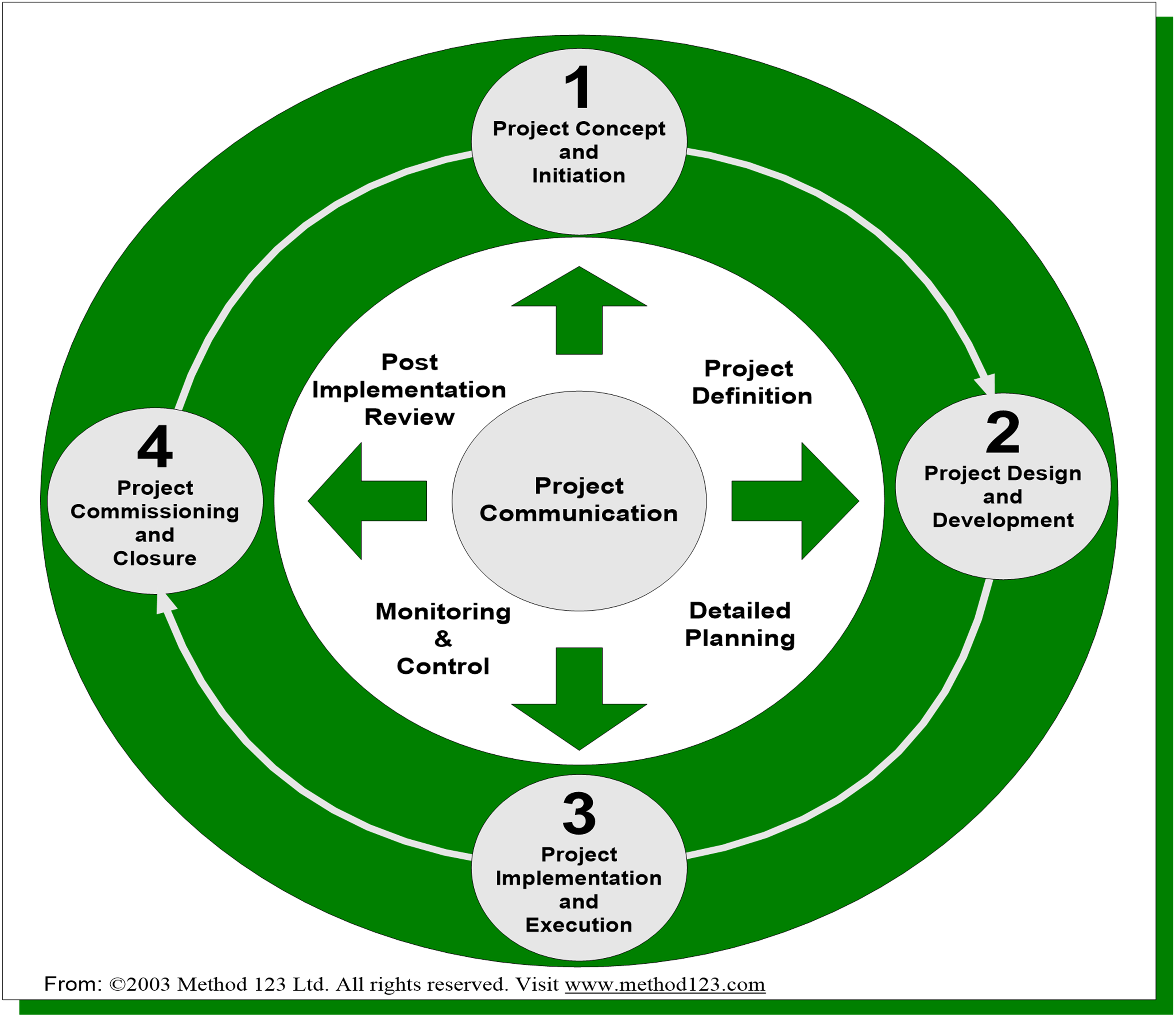The purpose of a project lifecycle is to provide a framework for dividing the project’s scope of work into appropriately-sized phases or work divisions. Whereas the work breakdown structure is a hierarchical subdivision of the scope of work, the project lifecycle divides the scope of work into a sequence of project phases.
Different types of lifecycles are present in different types of industries that make sense in specific projects. The type of industry as well as the type of project will determine to a large extent which type of lifecycle will be applicable. Consider the following examples:
|
ENGINEERING |
MANUFACTURING |
COMPUTER PROGRAMMING |
CONSTRUCTION |
|
Start-up Definition Termination |
Formation Build-up Production Phase-out Final audit |
Conceptual Planning Definition and design Implementation Conversion |
Planning, data gathering and procedures Studies and basic engineering Major review Detail engineering Detail engineering /construction overlap Construction Testing and commissioning |
A generic project life cycle has been developed that covers the concepts from all industries. There is general agreement that most projects pass through a four-phase lifecycle under the following headings:
Concept and Initiation Phase: The first phase starts the project by establishing a need or opportunity for the product, facility or service. The feasibility of proceeding with the project is investigated, and on acceptance of the proposal, moves to the next phase.
Design and Development Phase: The second phase uses the guidelines set by the feasibility study to design the product, outline the build method and develop detailed schedules and plans for making or implementing the product.
Implementation of Construction Phase: The third phase implements the project as per the baseline plan developed in the previous phase.
Commissioning and Handover Phase: The fourth phase confirms that the project has been implemented or built to the design and terminates the project.

Input, Process and Output Format: The project lifecycle subdivides the project into a number of definable project phases or stages, and these phases in turn can further be subdivided into an input, process and output format. This is consistent with the approach of the body of knowledge to describe the project management process in terms of input, output, tools and techniques.
|
Accumulative Effort |
|||
Concept |
Design |
Implementation |
Commission |
|
Input |
Input |
Input |
Input |
|
Project Brief (problem/opportunity) Project Charter (initiation) |
Approval |
Approval |
Certificate of completion |
|
Process |
Process |
Process |
Process |
|
Feasibility study |
WBS, Estimate, Risk Analysis, CPM, Gantt chart, OBS |
Award contracts, plan control, scope change control |
Test, run-up equipment |
|
Key Activities |
Key Activities |
Key Activities |
Key Activities |
|
Identify stakeholders Cost Benefit Analysis |
Model testing |
Plan and control |
Quality testing |
|
Hold Points |
Hold Points |
Hold Points |
Hold Points |
|
Market research Approval |
Design approval |
Required by client Required by QC |
Client witness |
|
Output |
Output |
Output |
Output |
|
Project Proposal (solution) |
Baseline plan |
Certificate of completion |
Closeout report |
|
Decision |
Decision |
Decision |
Decision |
|
Proceed with yes or no |
Proceed with yes or no |
Ready to hand over for commissioning |
Project accepted. Hand over for operation |
Project Lifecycle Components: Source: © Project Management Techniques – Rory Burke